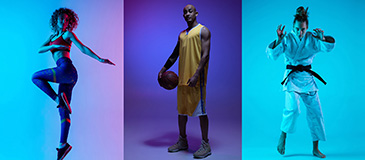- Home
- Blog
- Active Life
- The Gentle Art of Jiujitsu
How the peaceful practice of defending oneself developed into the competitive sport it is today.
Martial arts is rapidly growing in the Middle East, a complex sporting genre with many different forms, styles, and theories regarding its origin. With the Jiujitsu Vice President Cup taking place in Dubai in June, this article aims to explore this complicated yet beautiful sport further.
Although popular as a defensive sport, the literal translation of jiujitsu is ‘gentle art.’ There are many countries that claim the sport as its own including Japan, China, Germany and Egypt. Almost all countries throughout history, were heavily involved in hand-to-hand combat at some point, and after all hand-to-hand contact is the basis of jiujitsu. One of the main reasons it’s so challenging to pinpoint where exactly the sport originated; is due to the deep-rooted age of the art; with historians pouring over ancient manuscripts, writings, and illustrations, to try and determine its humble origin.
Another country that could be a contender for the initiator of the sport is Greece. Famous for it’s Olympic Games, Pankration which combines wrestling and boxing technique, was a particular favourite in Ancient Greece; similar technique can be seen in jiujitsu. Alexander the Great was known to travel the world as part of his reign, it is thought that he introduced this style of martial arts to India, thus showcasing this gentle artform to the world.
This is one of the many wonderous suggestions; a second widespread idea is that part of the development, a crucial part, was that Buddhism was merged into the movements of jiujitsu, by Buddhist monks in northern India. The story here is that as Buddhism is a peaceful practice, which rejects the use of weapons; the monks would use this gentle art to defend themselves against the robbers of the time.
Due to their wonderful knowledge of the mechanics of the human body, they were able to apply the laws of physics; focusing on momentum, balance, center of gravity, leverage, weight transmission and manipulation, to be able to develop this beautiful form of self-defense.
Wherever the origin, it is certain that Japan was instrumental in developing the technique into the combative, competitive sport we know today. Between the 8th and 16th centuries jiujitsu was used on the battlefields, with swords, Japan became known for its unique sword technique, what we would later come to know as Samurai.
Around 1532 the word jiujitsu was being formally used, initially by Hisamori Tenenuchi, who set up and established the first school of jiujutsu in Japan. Once war ended, the technique that had been combined with the Samurai sword was no longer needed, however Japan wanted to continue the practice of jiujitsu. This was when Judo was established; after another reform, jiujitsu was named the national martial art in Japan. Thus, the genre of combative martial arts was borne, and really came into fruition in the 17th century.
Do you know any of the well-known figures in jiujitsu?
In the Early Days Fukuda Hachinosuke Iso Masatomo Likubo Tsunetoshi
In Japan Jigoro Kano Yoshiaki Yamashita Tomato Tsunejiro
In Brazil Carolos Gracie George Gracie Oswaldo Gracie Helio Gracie Carlson Gracie |
Yes, you read correctly, jiujitsu’s lineage can also be traced back to Brazil. As the Samurai battles came to an end; and guns took over as the weapon of choice, many different versions of jiujitsu took place. The aforementioned Judo along with Karate and Aikido, were becoming very popular. But there was something missing. The art of the original genre had been lost along the way.
Luckily the Gracie family in Brazil had developed a keen interest in jiujitsu, and they were instrumental in bringing the original art of jiujitsu to life. This was around 1914. The story of how this developed is quite lovely. Jiujitsu student Esai Maeda travelled to Brazil as part of a large Japanese immigration colony. Maeda befriended Gastao Gracie a successful business man. In return for Gracie supporting Maeda’s transition into Brazil, Maeda offered to teach traditional Japanese jiujitsu to his oldest son. This was Carlos Gracie, who found his peace studying the defensive genre, and he eventually passed on his new found knowledge to his brothers.
The youngest of the Gracie brothers Helio, was a sickly child, often fainting and becoming short of breath. Under doctor’s recommendation he was told to refrain from participating in the sport, limited to being an observer. As luck would have it, a student arrived at class, and Carlos the teacher was not around. Helio, having memorized all the techniques purely from observation, began teaching the student from memory. When Carlos arrived, the student had enjoyed the session so much he requested to continue learning from Helio. It was from this that Helio then went onto become an instructor.
If you are interested in learning the practicalities of this beautiful sport, or you have been inspired by the rich history, or the motivational story of the Gracie brothers, there are a number of jiujitsu clubs you can visit here in Dubai, check out our list below, if you want to give it a try.
Jiujitsu Clubs in Dubai
Lions Karate Martial Arts Club – [email protected]
Royce gracie jiujitsu Academy – [email protected]
10th Planet Jiujitsu Dubai – [email protected]
Alliance Jiujitsu Motor City – [email protected]
- Active Life (27)
- On the Bench with... (1)
- Your How to Guides (5)








